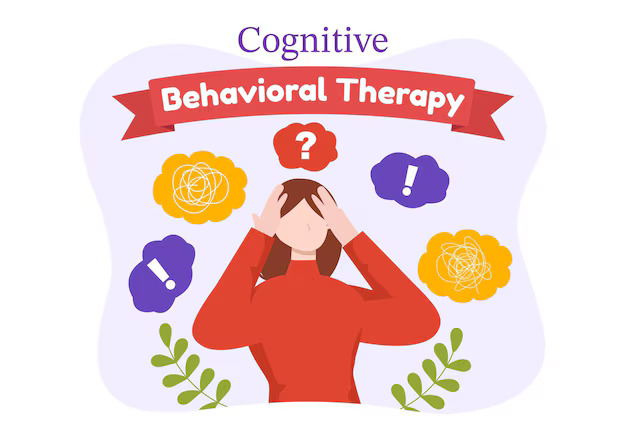Psychological testing has become rampant across industries, more so in the case of Information Technology, BPOs and ITES companies. These tests are used to ‘throw up’ personality profiles and competency descriptions that would help companies recruit the ‘right’ candidate. The Human Resources department in most organizations is responsible for the administering of Psychometric tests.
The International body that sets guidelines for testing is the International Test Commission (ITC) which stipulates guidelines for adaptation and usage of tests. ITC has issued guidelines to cover the following –
- Professionals and ethical standards in testing
- Rights of the test candidate and other parties involved in the testing process
- Choice and evaluation of alternative tests
- Test administration, scoring and interpretation
- Report writing and feedback.
ITC has defined Competence in test use as “A Competent test will use tests appropriately, professionally and in ethical manner, paying due regard to the needs and rights of those involved in the Testing process, the reasons for testing, and the broader context in which the testing takes place.”
There are many reasons why a test can be fallible-
- Inappropriate usage of Tests
The norms for which the tests have been designed have to be considered carefully. They cannot be administered to a population that is different from the norm population (Norm population can be adolescents, senior executives; norms could be based on age, occupation, gender, economic status etc.). That is, a test designed for adolescents cannot be administered on Senior Executives and vice versa because the results of such administration would be faulty. - Culture Fair Testing
Another common flaw is in the usage of tests which are not culture fair. Many psychological tests have been designed for the western population and can be used appropriately only in that culture. Unfortunately many of these tests are used on the Indian population giving rise to faulty conclusions. - Design of test
The psychometric can only be designed by professionals qualified in psychometrics. Many a times lay people design test using the help of information accessed through the internet or sometimes even from their own common sense. Such tests are not valued. - Validation of test
Evert test that has been designed has to be validated. The process of validation would involve administering the test on large population over a period of time before it is certified as “ready for use”. This cannot be done from tests that are fabricated overnight. - Downloaded test
Often tests are downloaded from the internet and are used for proposes other than for which they have been designed. For e.g. a personality test being used to test the emotional intelligence or team skills of a person. - Wrong customization
Sometimes the items of a test are changed to suit the user. In such instance the test cannot give valid result. For example an item (a question / statement in the test) would state – ‘Do you usually date on weekends?’, could be changed to ‘ do you socialize on weekends ‘ to fit the Indian scenario. The results of the tests with such changed items will not be valid. - Test administration
The test administration should be systematically standardized, i.e., the test should be administered exactly under the same condition to all the users. This means that the actual test environment, the instruction, the timing and materials are the same on every test occasion. Before administering the test the user must consider the following deadlines-- What is the purpose of testing?
- What outcomes will be achieved through testing?
- Why are these specific tests being used?
- Why are these tests relevant to the outcomes being sought?
- What evidence is there that these tests are appropriate for the people who are to be accessed?
- Confidentiality of test results All results of test must be maintained by the administrator in strict confidence. Revealing the results could lead to unfair discrimination in the workspace. This happens when a selection that is used is disadvantageous to certain groups within the organizations. For example the results of IQ tests conducted on students were revealed to the teachers to the disadvantage of the students. The teachers who were privy to the IQ test information exhibited prejudiced judgments about those students who scored low in these tests. Consequently, the use of IQ tests in the US schools has been banned and can only be used after prior permissions from the parents.To ensure confidentiality, the following guidelines should be considered:Ensure that test materials are kept securely.
- Ensure that test materials are kept securely
- Ensure secure storage of and control access to test materials.
- Respect copyright law and agreements that exist with respect to a test including any prohibitions on the copying or transmission of materials in electronic or other forms to other people, whether qualified or otherwise.
- Protect the integrity of the test by not coaching individuals on actual test materials or other practice materials that might unfairly influence their test performance.
- Ensure that test techniques are not described publicly in such a way that their usefulness is impaired.
- Competence of Test Administrator and Interpreter he personnel administering the tests have to be strict in following the instructions stipulated by the test designers. The interpretations too have to be done by qualified personnel who are psychologists.
- Limitation of tests The tests are ‘limited’ for the purposes for which they have been designed. For a holistic assessment of an individual, it is required that the test results are supplemented by information from interviews and group discussions. In addition the test results are not valid after eighteen months of its administration.
- Test Copyrights It is an offence to copy tests that have been copyrighted. They can only be used after the necessary permission is obtained from the designers. Otherwise this illegal copying may lead to lack of standardization in test condition and poor control of materials.
- Test feedback Often times the guidelines for feedback are not followed by the Users. The British Psychological Society has set out the following guidelines for written and oral feedback:
- Ensure that the technical and linguistic levels of any reports are appropriate for the level of understanding of the recipients.
- Make clear that the test data represent just one source of information and should always be considered in conjunction with other information.
- Explain how the importance of the test results should be weighted in relation to other information about the people being assessed.
- Use a form and structure for a report that is appropriate to the context of the assessment.
- When appropriate, provide third parties with information on how results may be used to classify people into categories (e.g. for diagnostic purposes or for job selection).
- Include within written reports a clear summary, and when relevant, specific recommendations.
- Present oral feedback to test takers in a constructive and supportive manner.



 How the Mind Protects Itself: Understanding Defense Mechanisms
How the Mind Protects Itself: Understanding Defense Mechanisms  Finding Harmony: The Psychology of Work-Life Balance
Finding Harmony: The Psychology of Work-Life Balance  Cognitive Appraisal: Understanding How Your Mind Shapes Emotions
Cognitive Appraisal: Understanding How Your Mind Shapes Emotions  Understanding Cognitive Behavioral Therapy: A Guide
Understanding Cognitive Behavioral Therapy: A Guide  Embracing the tide of Emotions
Embracing the tide of Emotions  How Our Minds Play Tricks on Us
How Our Minds Play Tricks on Us  Handling Questions Effectively
Handling Questions Effectively  Professional Counsellors v/s Non-Professional Counsellors
Professional Counsellors v/s Non-Professional Counsellors  The Fallibility of Psychological Testing
The Fallibility of Psychological Testing  Cognitive Distortions
Cognitive Distortions 

